What is it?
Venetian plaster wallpaper (also called Venetian) is a vinyl wall covering on a non-woven or paper base. With their help, you can create an imitation of stone relief. The texture of Venetian wallpaper is similar to stone or marble, which allows you to give the interior a prestigious look.
Most often, Venetian wallpaper is sold in rolls, but there is also another variety – liquid wallpaper. They are applied with a spatula, which is why they look like a monolithic coating without joints.
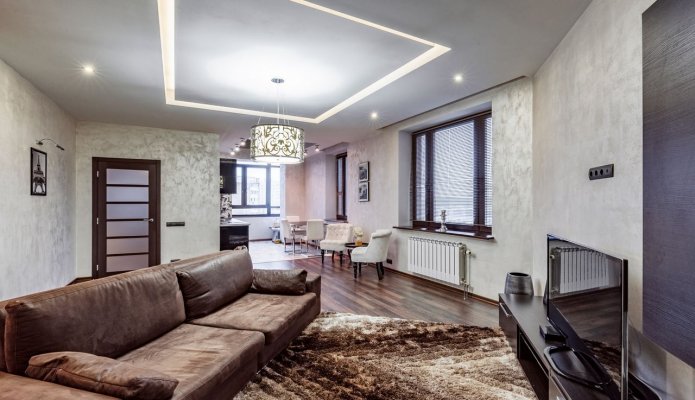
Wallpaper in a roll can be washed, which makes it a more universal covering. They are suitable for decorating a living space, a stylish office or a country house. The non-woven base allows you to glue the wallpaper in the bathroom or shower. The roll has a standard width of 50 cm, length – 10 m. Imitation of Venetian plaster differs from other wallpapers in its significant thickness and greater weight.
Advantages and disadvantages
Wallpaper under the Venetian plaster is the optimal solution for those who prefer sophistication in interior decor. But, before gluing them, you need to weigh the pros and cons of this coating.
- Lower cost than plaster;
- Allows wet cleaning;
- Have antistatic quality – dust does not settle on them;
- Durable;
- Resistant to damage;
- Wide color palette;
- Not susceptible to sunlight.
- The price of Venetian wallpaper is higher than standard;
- Not all varieties are durable – budget coating under plaster will last no more than 5 years;
- Due to the weight, you need to use special glue;
- The coating under plaster is not environmentally friendly, so it is not recommended to decorate bedrooms and especially children’s rooms with it;
- Liquid decorative has low sound insulation, high cost and does not allow wet cleaning cleaning.
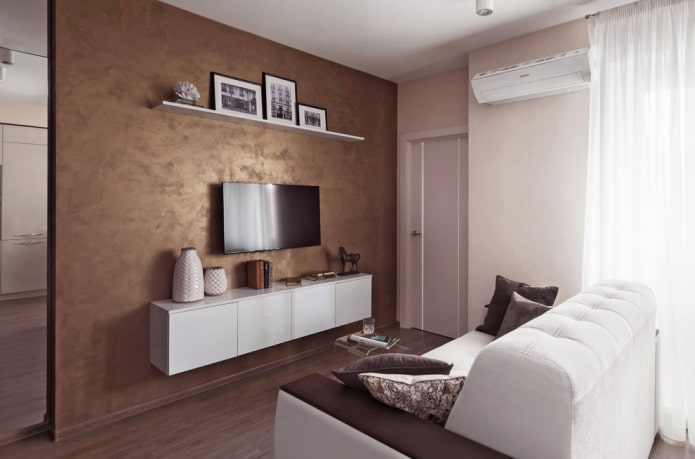
Color scheme
The variety of colors allows you to choose Venetian plaster for any interior. The coatings can be combined or use only one color when gluing.
Orange
Bright Venetian plaster is suitable for a classic interior and goes well with green, gray or white interior elements.
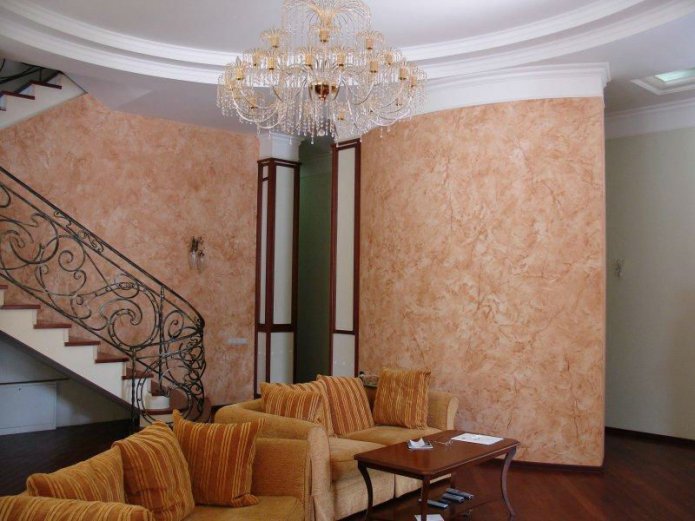
Gray
Wallpaper imitating Venetian plaster is very practical and allows you to create an imitation of stone walls.
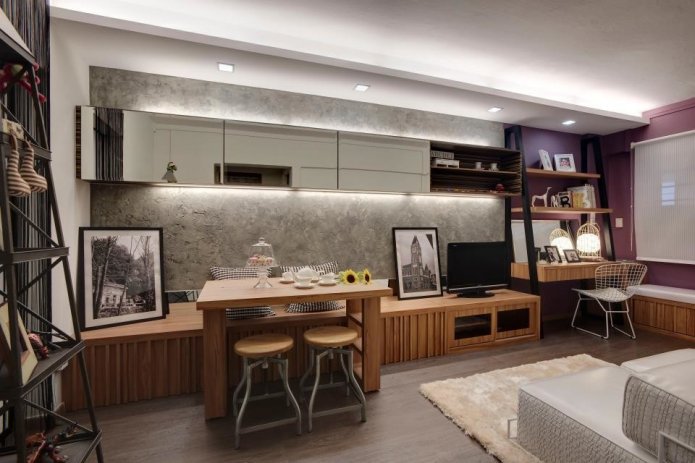
Green
For a modern design, juicy shades of green are suitable. For a classic interior, you should choose a cold shade.
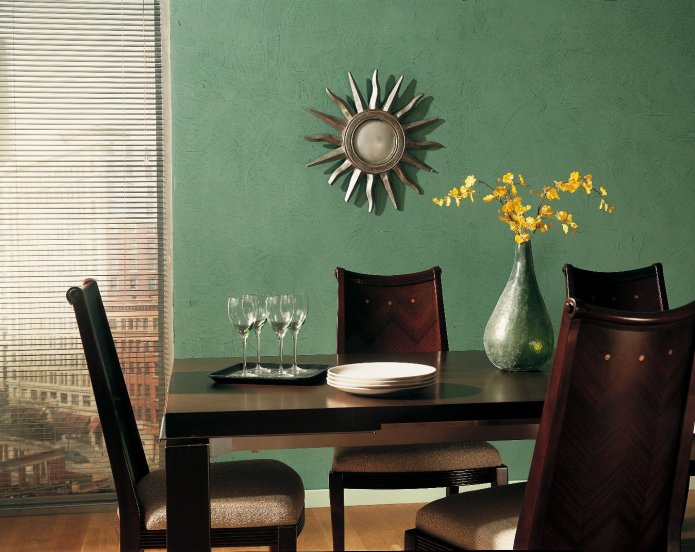
White
The universal white color creates an accent on the texture and allows you to introduce color variety.
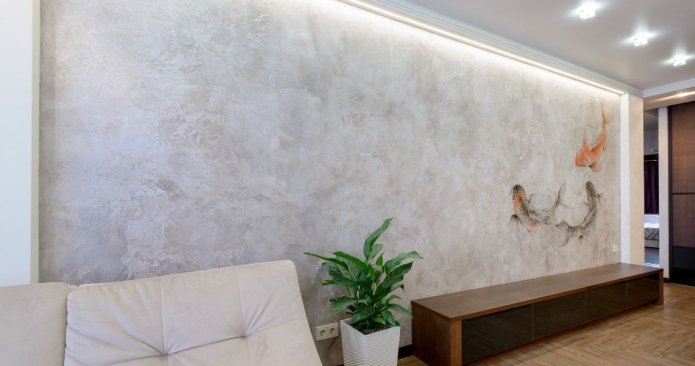
In the photo: a successful combination of white Venetian and minimalism.
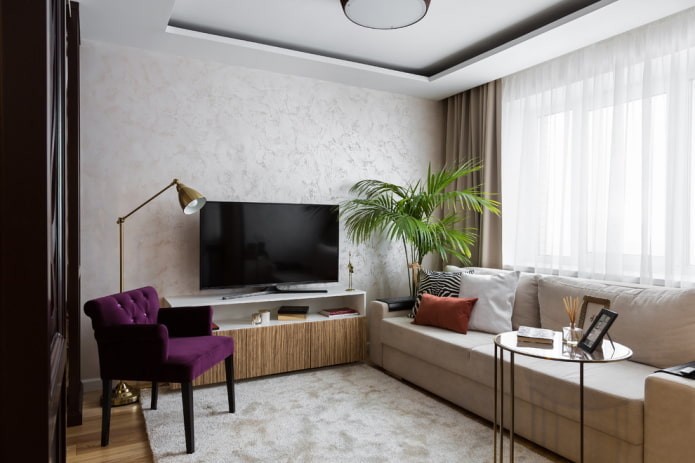
Beige
Those who want to create a classic, but expensive design in the room, it is recommended to choose beige color.
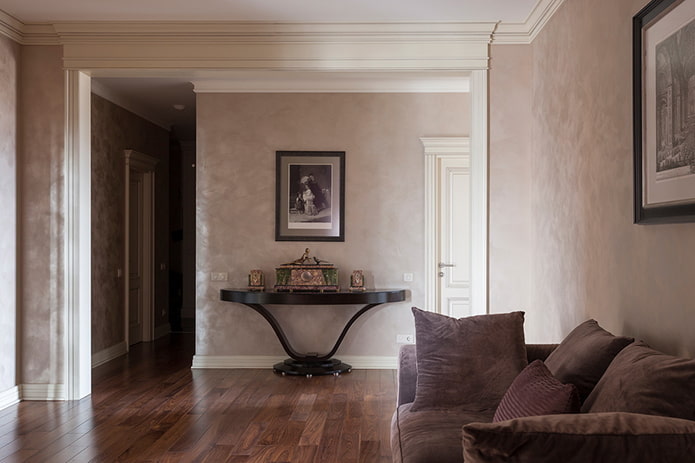
Combination of two colors
The combination is usually done using plain and textured wallpaper. You can also combine wallpaper of the same texture, but different colors. It is important that both options for covering under Venetian plaster are warm or cold. A combination of one color scheme is acceptable.
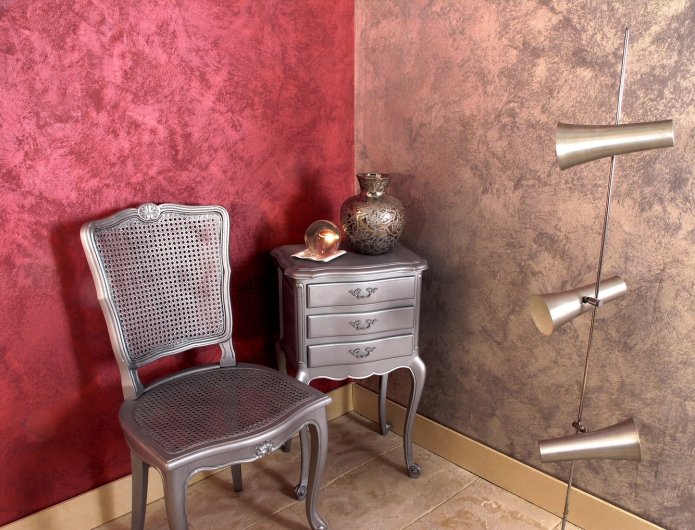
Design and patterns
Venetian wallpaper is available in various textures, which makes it possible to choose a surface more suitable for a particular style.
Marble
Imitation marble creates a dignified and at the same time sophisticated style. Wallpaper can shimmer or maintain respectability with a matte finish. In any case, marble Venetian looks expensive and repeats fashionable Italian interiors.

Metallic
The role of metal in Venetian wallpaper is performed by a special foil. It shimmers in the light, which adds unusualness to the design. Metallic wallpaper with flowers or patterns is used when you want to add aristocracy. Fans of high-tech can also paste Venetian wallpaper, repeating the texture of metal plates.
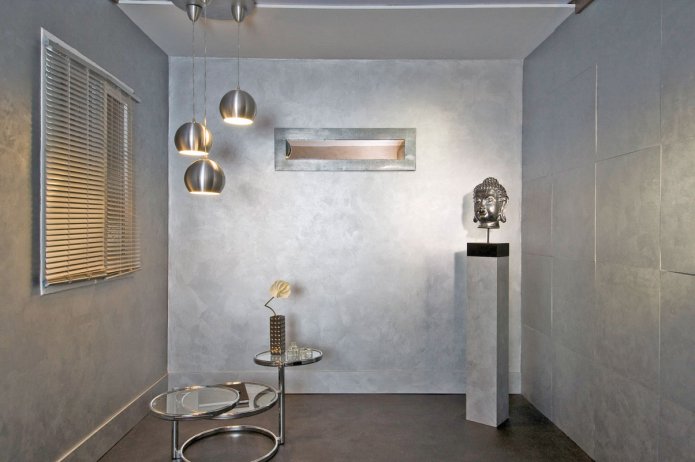
With patterns
A wide range of materials for plaster makes it possible to select an ornament to suit any requirements.
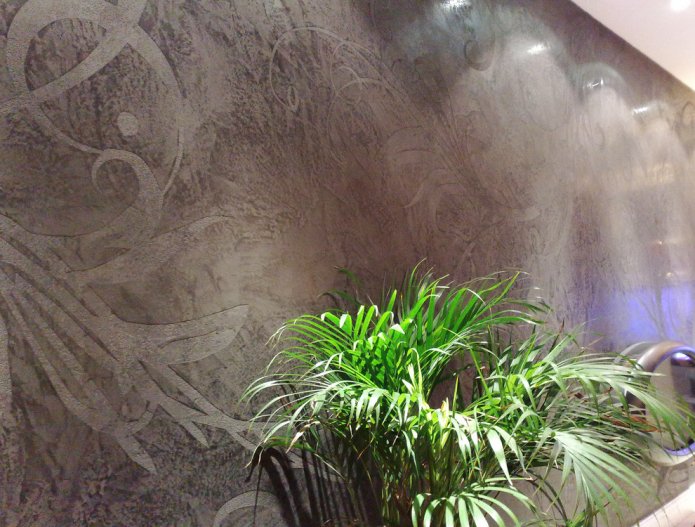
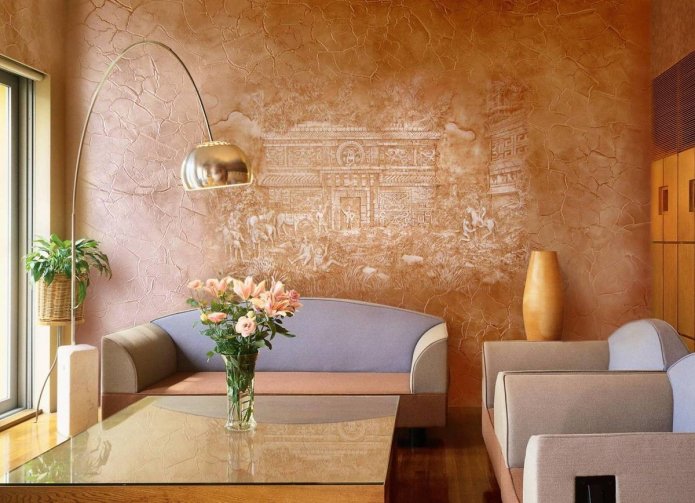
In the photo: an unusual pattern complements the room’s design.
Photos in room interiors
Venetian plaster can be used in any room. Likewise, there are no strict limits on their use in any particular room. Their practicality makes them appropriate for any room.
In the kitchen
Designers advise to glue Venetian wallpaper in the kitchen because of its durability. They can also be wiped with water, removing dirt. Imitation of brickwork or patterned coating looks decent.
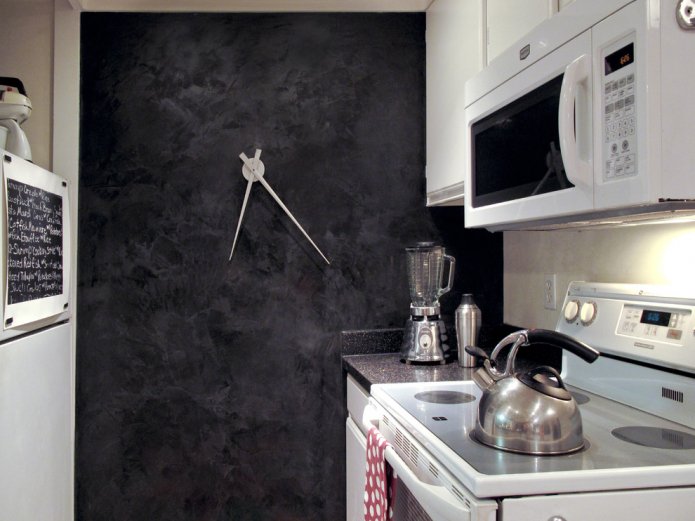
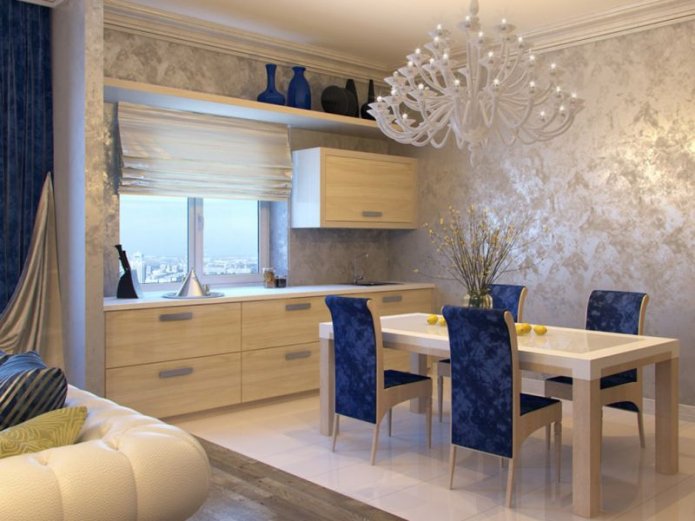
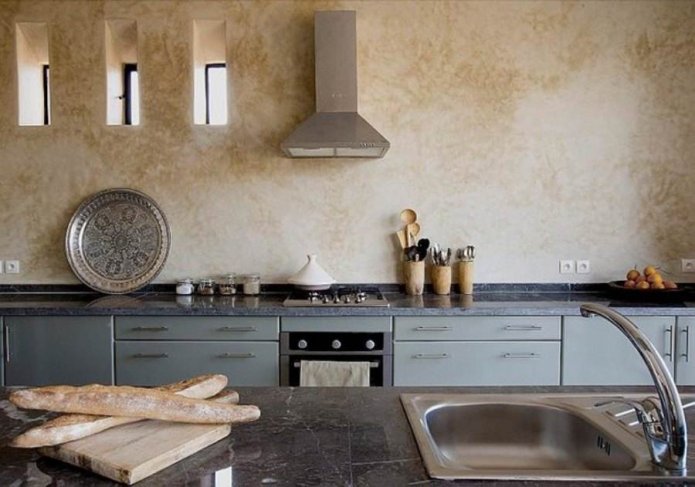
In the hallway
A small space suggests a small pattern and light colors. If the corridor is large, it can be finished with plaster with a metallic sheen – it will shimmer beautifully when the lights are on.
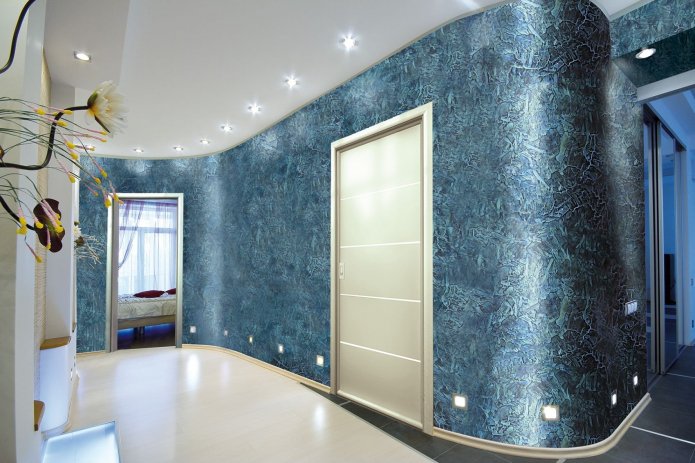
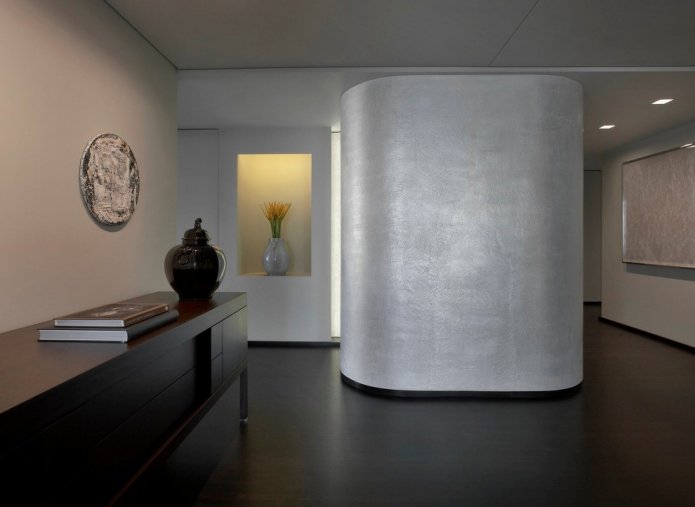
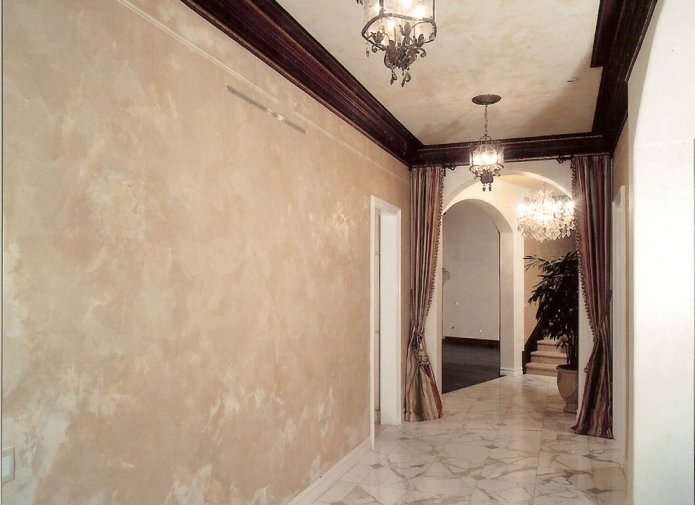
In living room
A large room allows you to use absolutely any version of Venetian decoration. The main thing is to correctly combine wallpaper with interior elements.
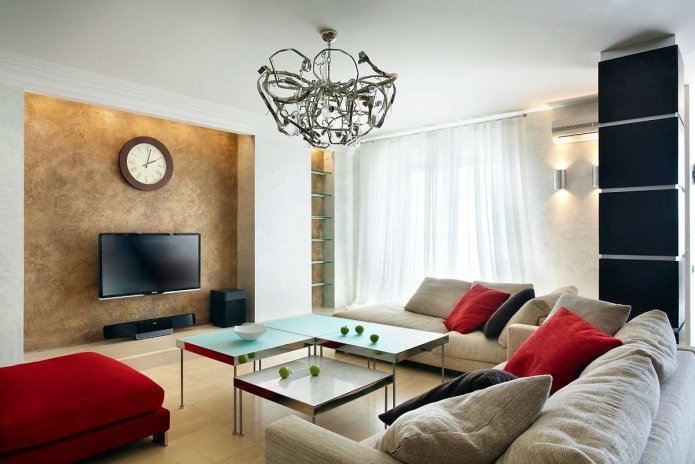
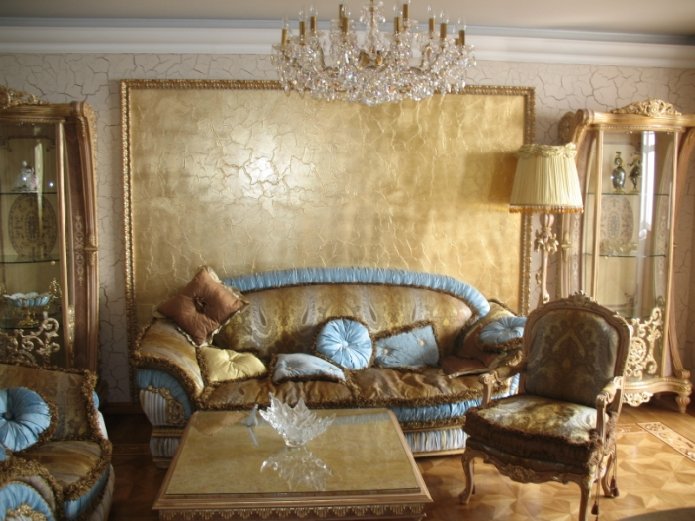
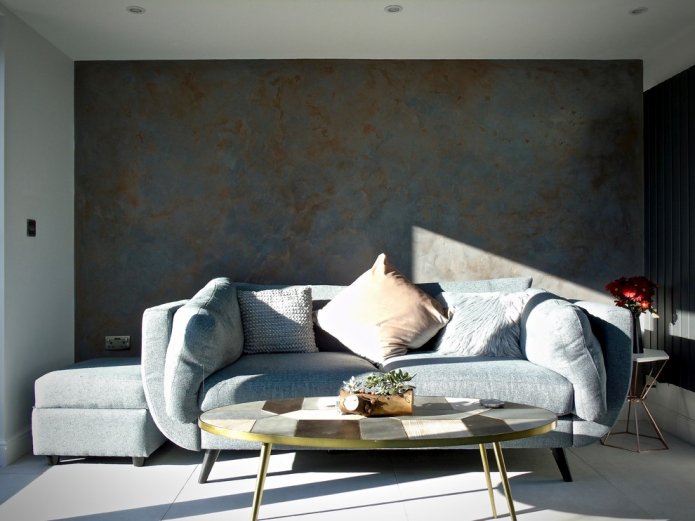
In bedroom
Calmer tones are suitable for a small bedroom, for large rooms you can use bright or dark shades.
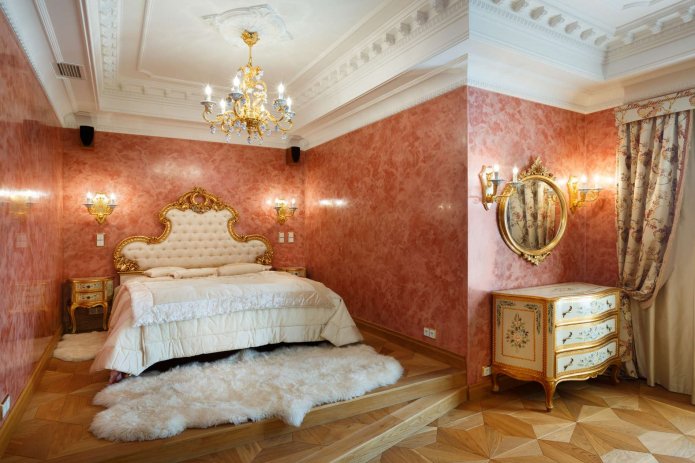
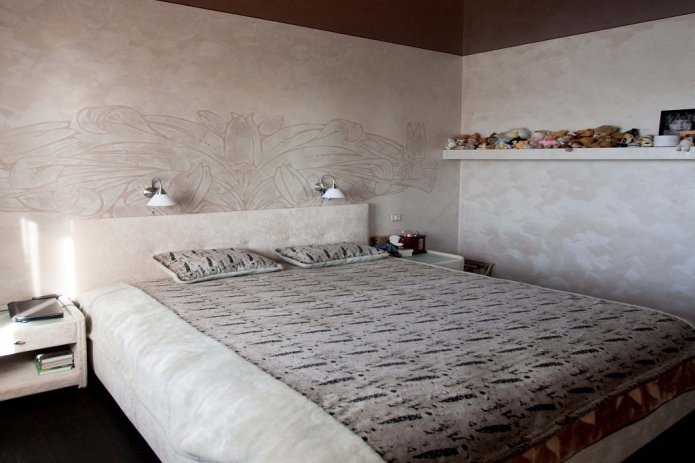
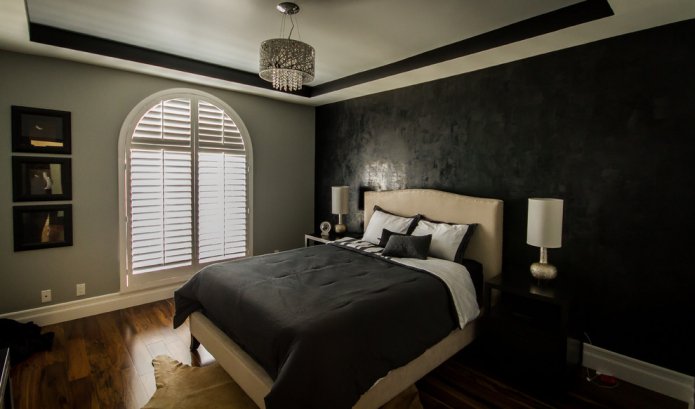
Options in different styles
Wallpaper with Venetian plaster fits perfectly into any style. You only need to maintain the chosen direction in everything, creating the space of your dreams.
Modern
Venetian is universal. With its help, you can embody a modern style. In this case, opposite color combinations, pastel shades or a suitable pattern are used.
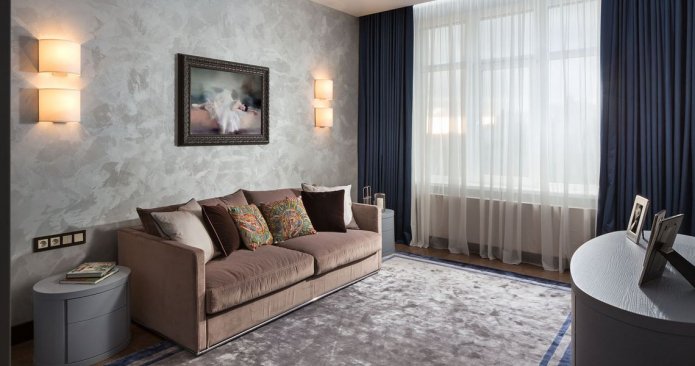
Loft
Metal or stone covering is used in the fashionable loft style. Their deliberate roughness is emphasized. Such wallpaper is usually applied to one wall or small, orderly areas.
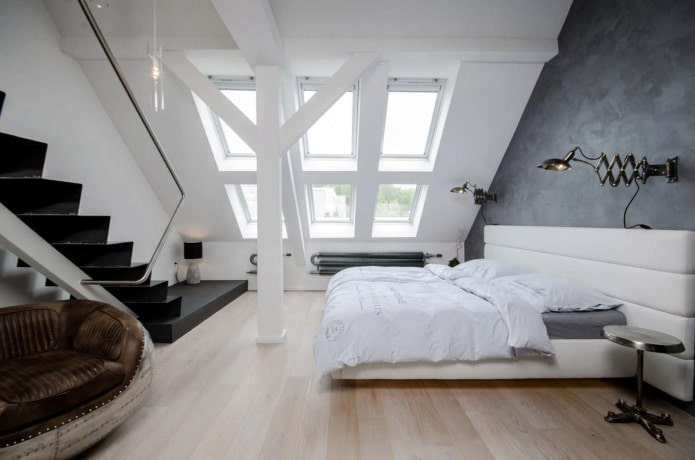
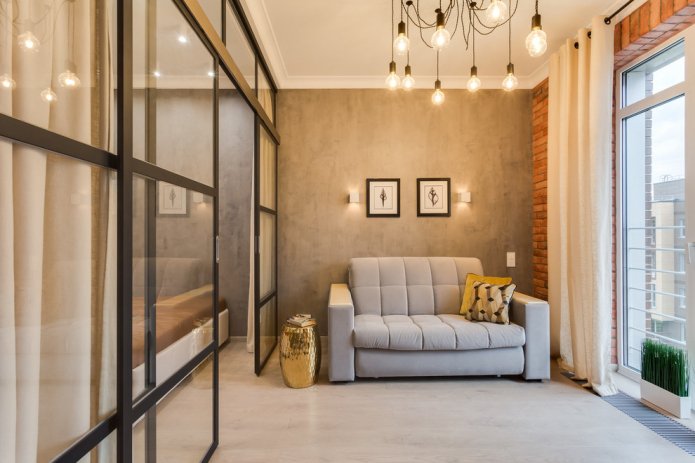
Provence
The elegant and simple Provence style is achieved with white or beige elements that complement the Venetian style.

Classic
Using Venetian plaster, you can maintain the severity of the room’s design, add prestige to it, or, conversely, dilute the coldness of the interior with a floral pattern.
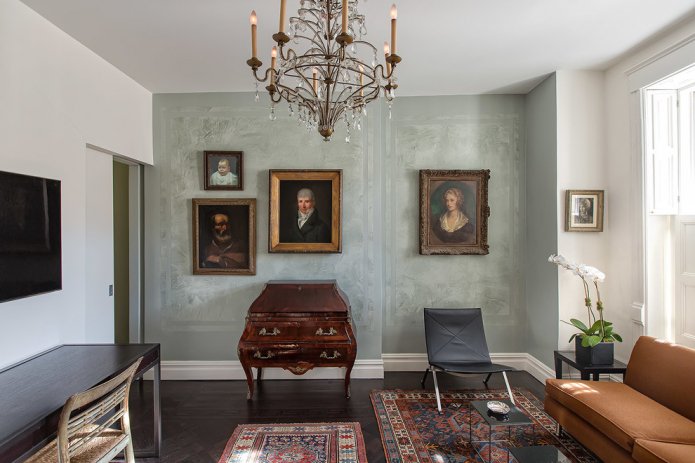
How to paint?
One of the advantages of plaster-like wallpaper is that it is durable. But this scares many people – they are not tempted by the prospect of looking at the same design for a long time. In fact, this type of coating can be painted. This allows you to vary the style to suit your preferences and fashion trends. Only latex paint is suitable for painting. To paint Venetian plaster, follow these steps:
- Pour paint into the tray.
- Place the roller in the paint.
- When removing the roller, allow excess paint to drip off.
- Apply to the walls, covering as much surface as possible. Roll the roller several times, spreading the paint over the walls.
- It is important to ensure that there are no “bald spots”.
- Finally, roll the roller over the painted walls again.
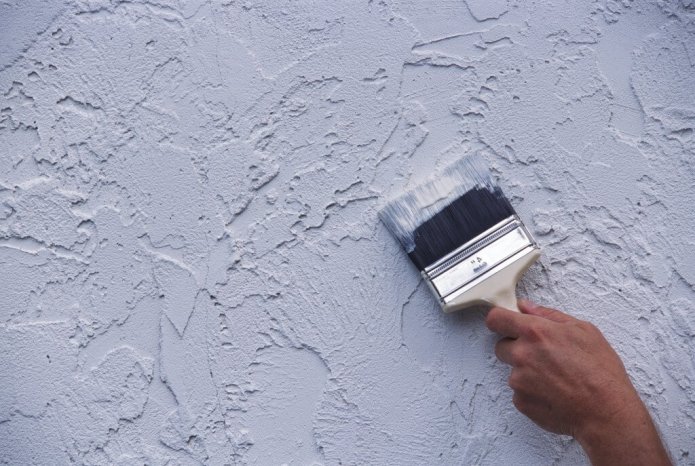
How to glue Venetian wallpaper?
The gluing process depends on the base. But in general it is similar:
- First, it is necessary to level the surface of the walls as much as possible. In case of minor defects, they are puttied, in case of large irregularities – plaster or drywall is applied.
- The walls need to be primed.
- The wallpaper is cut into strips. It is important to observe the allowances. The upper allowance is 1.5 cm, the lower – 3 cm.
- Using a plumb line, mark the reference point.
- In a special container, dilute the glue according to the instructions on the package.
- Apply the glue to the wall with a roller or a wide brush. If the base is paper, then you also need to glue the strip itself. Vinyl Venetian does not require this.
- Apply the first strip exactly along the plumb line. Start applying the strip from above.
- Use a spatula from top to bottom to remove all bubbles. The same is done from the center to the edges.
- Glue the second strip end-to-end with the first. Go over the joint line with a dry roller.
Now reading:
- Kitchen on the balcony: 36 inspiring photos and ideas for implementation.
- Kitchen Dining Area Design Ideas: 45 Photos for Inspiration
- Kitchen design ideas: colors, layout, furniture, lighting and design
- Your Ultimate Guide to Pre-Owned Jeep Vehicles
- More than 100 images of blinds in the interior – stylish solutions for windows.